india
Shimla: Queen
of Hill Stations

COLIN SIMPSON
Shimla
IMAGINE if every spring, a government moved its entire administration, with all its departments, officials and support staff, from the capital to a difficult-to-reach mountain town 1,800 kilometres away.
To get the distance into perspective, France extends 962 kilometres from east to west, while Texas is 1,387 kilometres wide. And then imagine that each autumn, everyone moved back to the capital.
All this was happening just a few years after railways were introduced, long before the widespread use of the internal combustion engine and nearly 40 years before the first manned flight.
It’s what used to take place in India in the colonial era after Shimla, a city in the foothills of the Himalayas, was declared the summer capital in 1864. The decision was made so that the government officials of British India could escape the searing summertime heat in the capital Calcutta, now known as Kolkata. The territory these migratory administrators controlled included modern-day India, Pakistan, Bangladesh and Myanmar.
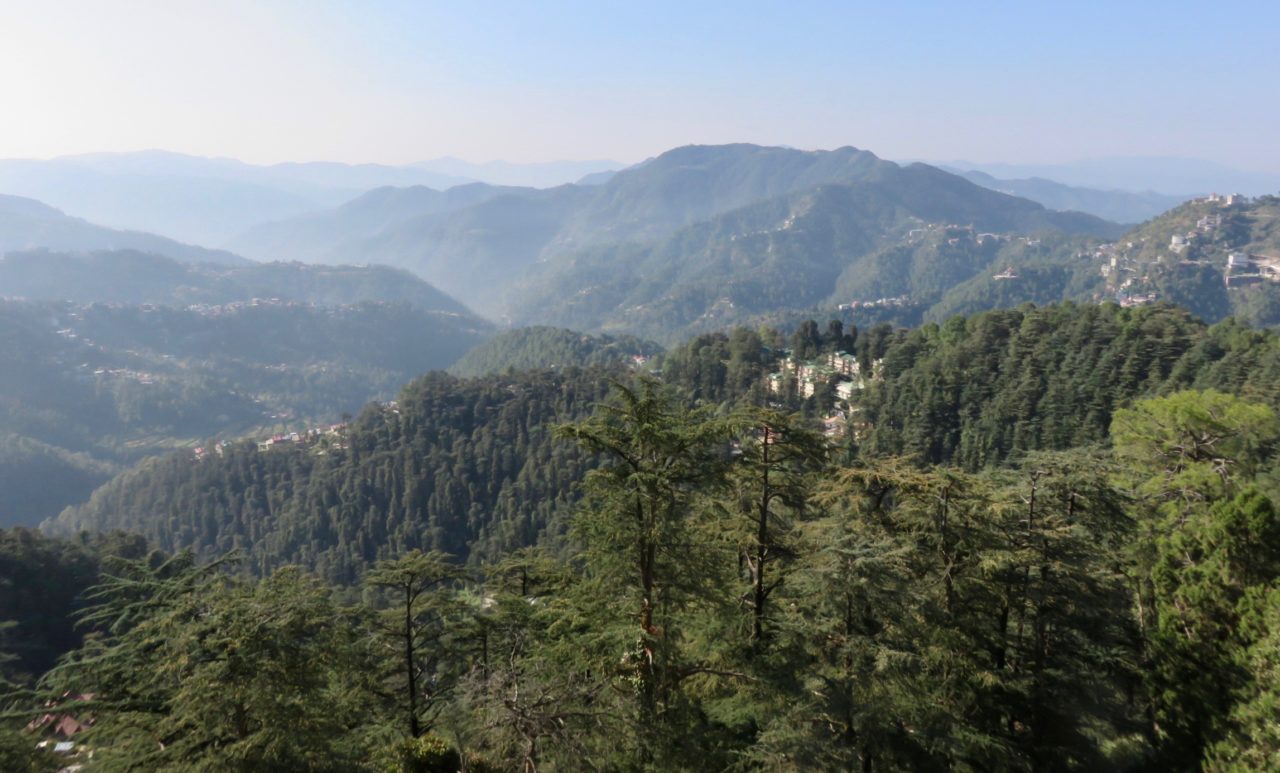
I found all this both intriguing and rather crazy when I read about it, and was keen to visit the “queen of hills”. It’s a spectacular and scenic place, much larger than I had imagined – population 170,000 – with closely packed houses and other buildings that spill down the hillsides.
When the British took control of the area where Shimla – named after a Hindu goddess – now stands, it was covered with thick forests and had a few scattered hamlets. Trees were quickly cleared to turn it into a hill station and make room for reminders of home such as Christ Church and the Gaiety Theatre.
Oddly, the church has a sign asking visitors to remove their shoes, something that’s more usually associated with Muslim rather than Christian worship. The stained glass windows are the work of Lockwood Kipling, father of Rudyard.
The church and theatre stand in an area called the Ridge that adjoins the Mall, the city’s main shopping street. This largely pedestrianised thoroughfare is the place to go if you want to eat, drink, pick up a few souvenirs or simply enjoy a pleasant stroll.
Another reminder of the colonial era is the Viceregal Lodge, the residence of the Viceroy of India under British rule. It’s a large, imposing pile built in a style that John Betjeman dubbed “Jacobethan” – a mix of Elizabethan and Jacobean architecture. It looked to me as if it would be more at home on some grand English country estate than next to the Himalayas, though there are good views of the mountains from the gardens.
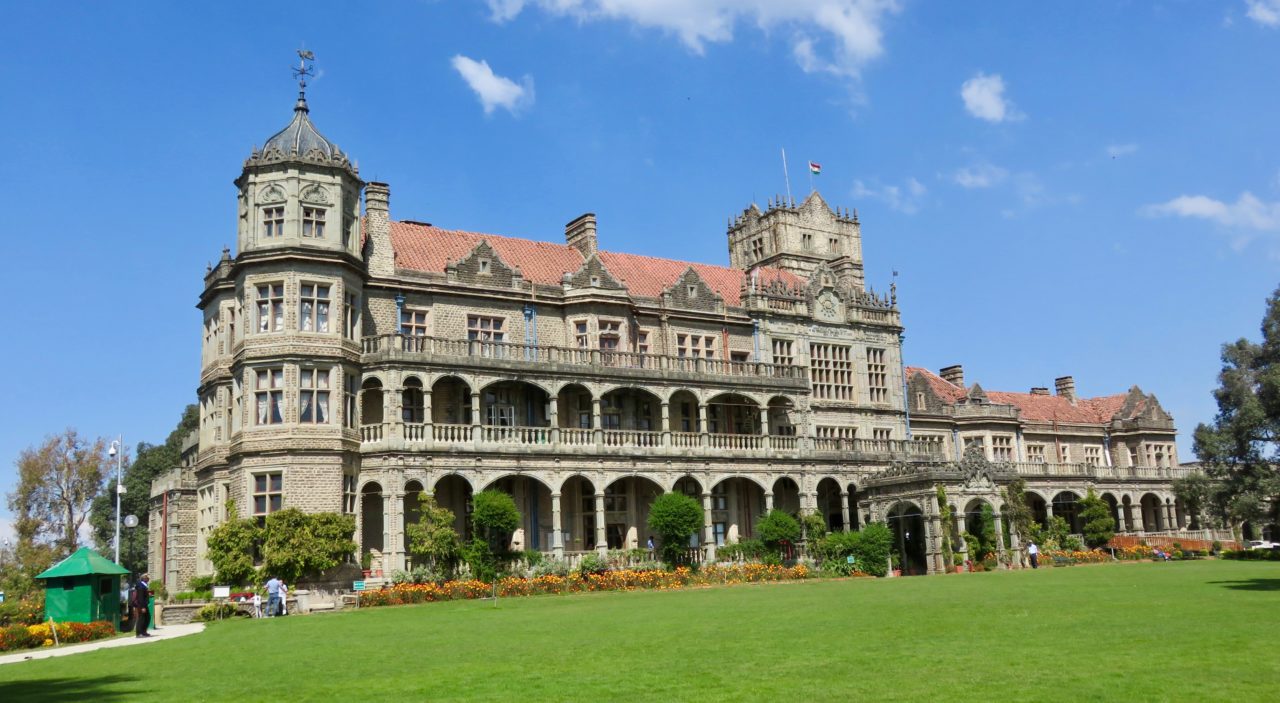
Inside the lodge – also known as Rashtrapati Niwas – history hangs heavily in the air. It was the venue for the Shimla Conference in 1945, a failed attempt to settle the future of India, and the 1947 partition discussions. The table where the plans for partition – which were to have such tragic consequences – are believed to have been drawn up can still be seen at the lodge. Mahatma Gandhi visited the residence a number of times for talks with the viceroy of the day.
After independence, the lodge was used for a time as a summer retreat by successive Indian presidents before being handed over to the Indian Institute of Advanced Study.
Shimla has witnessed other moments of history. In 1972, for example, Indian Prime Minister Indira Gandhi and Pakistan’s President Zulfikar Ali Bhutto signed a peace treaty there.
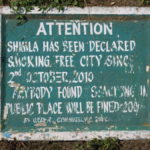
Today the city is a popular tourist destination and continues to give respite from the heat of the plains. We visited India in October when the weather normally turns cooler, but temperatures were unseasonably high in Delhi and other low-lying cities, so it was a relief to get there. It’s popular with hikers and anyone who appreciates breathing cool, fresh mountain air. Shimla was declared a smoke-free city in 2010 – smoking is prohibited in public places, there are restrictions on the sale of cigarettes, and tobacco adverts are banned.
Monkeys can be a bit of a nuisance. There are lots of them at the Jakhoo Temple, which is dedicated to the Hindu monkey god Hanuman. A 33-metre high bright red statue of the deity towers above the temple, which stands on the slopes of Shimla’s highest peak, 2,455 metres above sea level.
Visitors are given sticks to keep the monkeys at bay by striking the ground to make a noise. (The sticks are NOT used to hit the animals – no monkeys were harmed in the making of this blog post.) If the monkeys get too close they often snatch sunglasses and other items, and expect to be given food in exchange for returning the belongings.
We spent three relaxing nights in Shimla – but the benefits were quickly forgotten when we returned to the exciting, exhilarating but exhausting sprawl of Delhi. It’s true what they say about India being a land of contrasts – no two cities could be more different.
Top tip: Travel to the city by car, not the Kalka-Shimla Railway. The so-called toy train is slow, busy and uncomfortable and has limited space for luggage. We took a short ride on it, and a huge mound of suitcases piled up by the door fell across the carriage as soon as the train started moving. We travelled by standard train from Delhi to Kalka, where a driver picked us up and took us on a spectacular journey up to Shimla.
August 2019
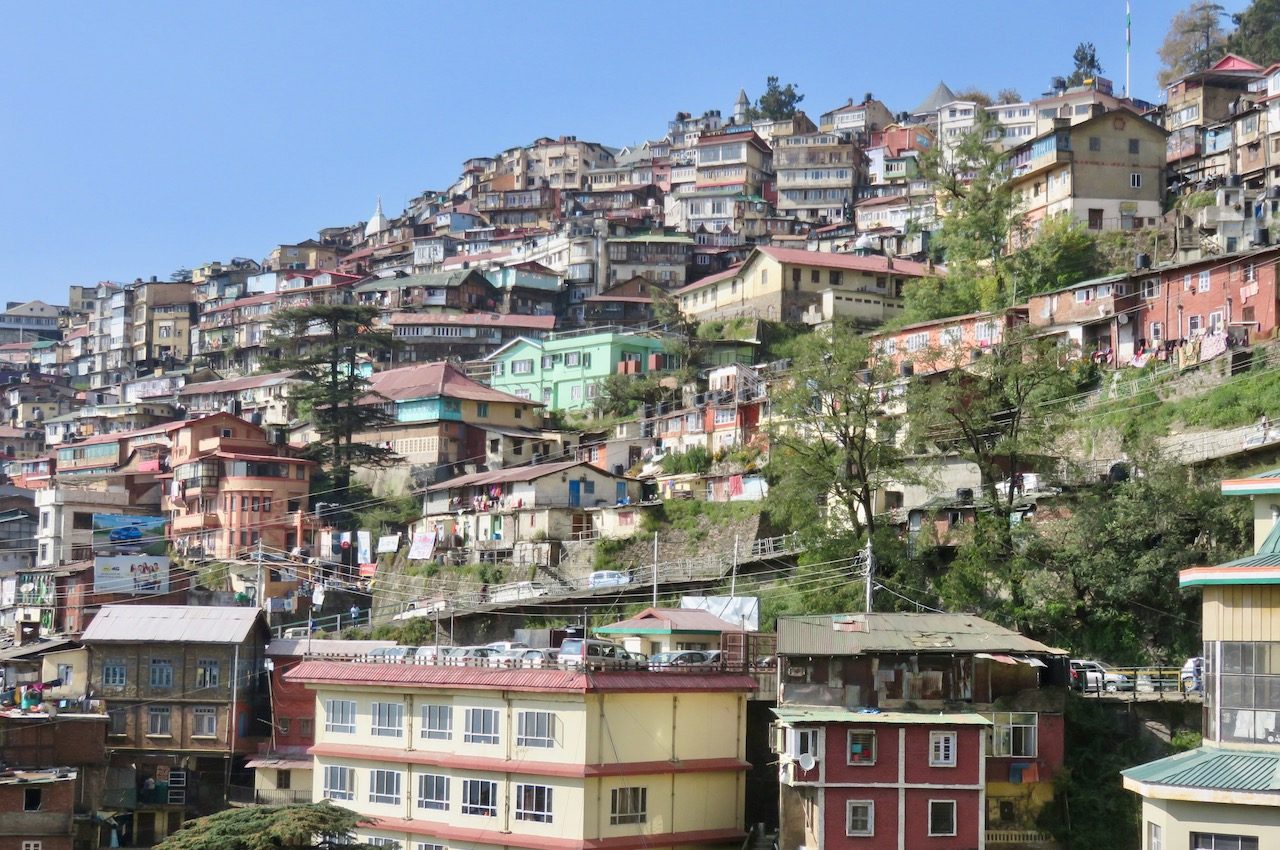
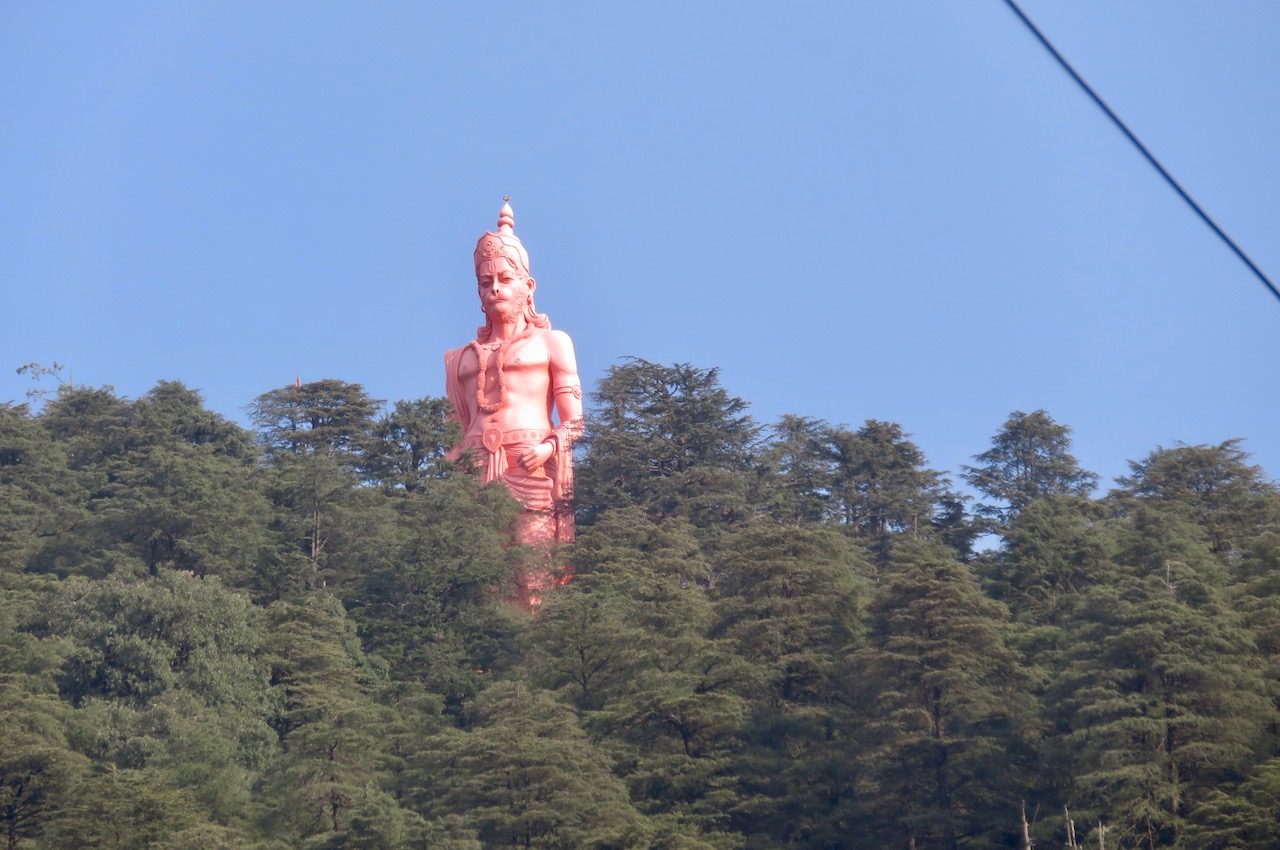
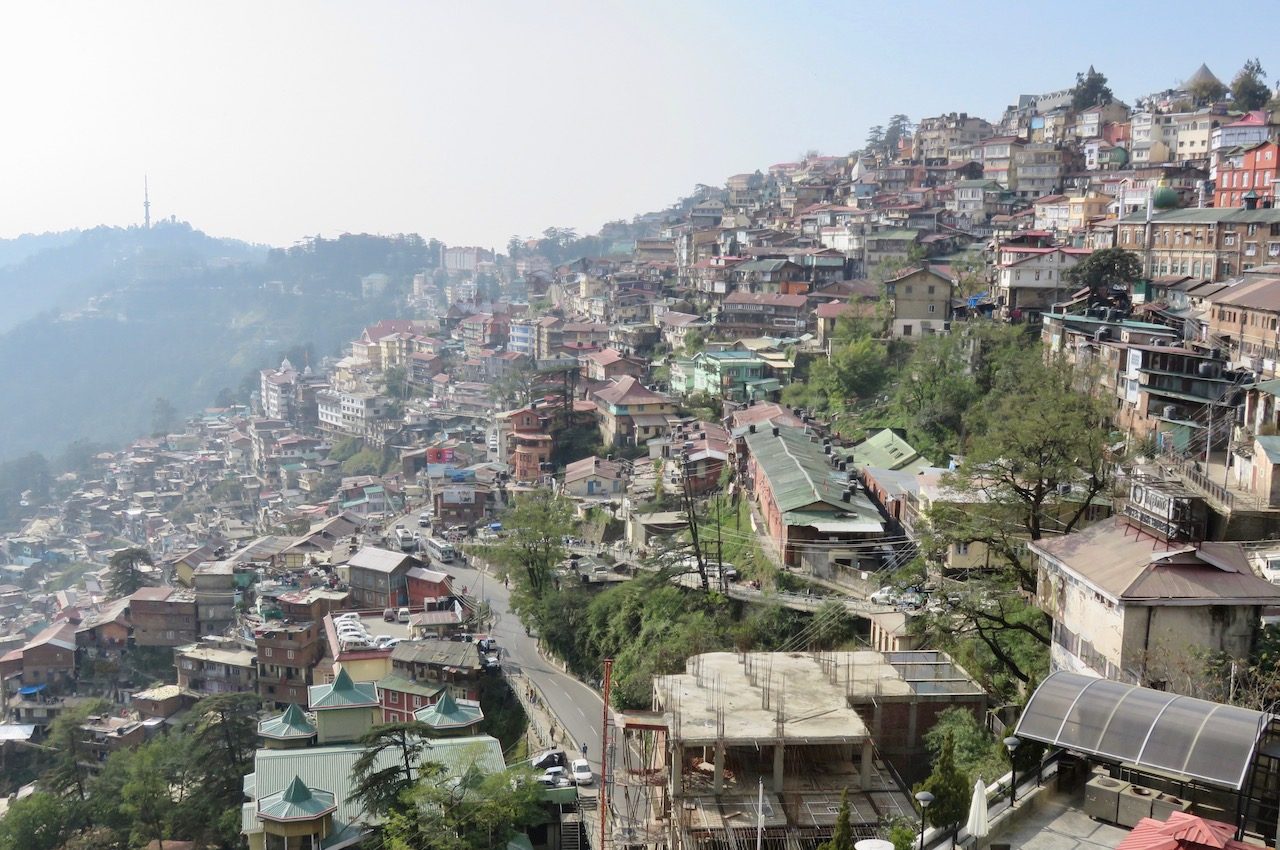
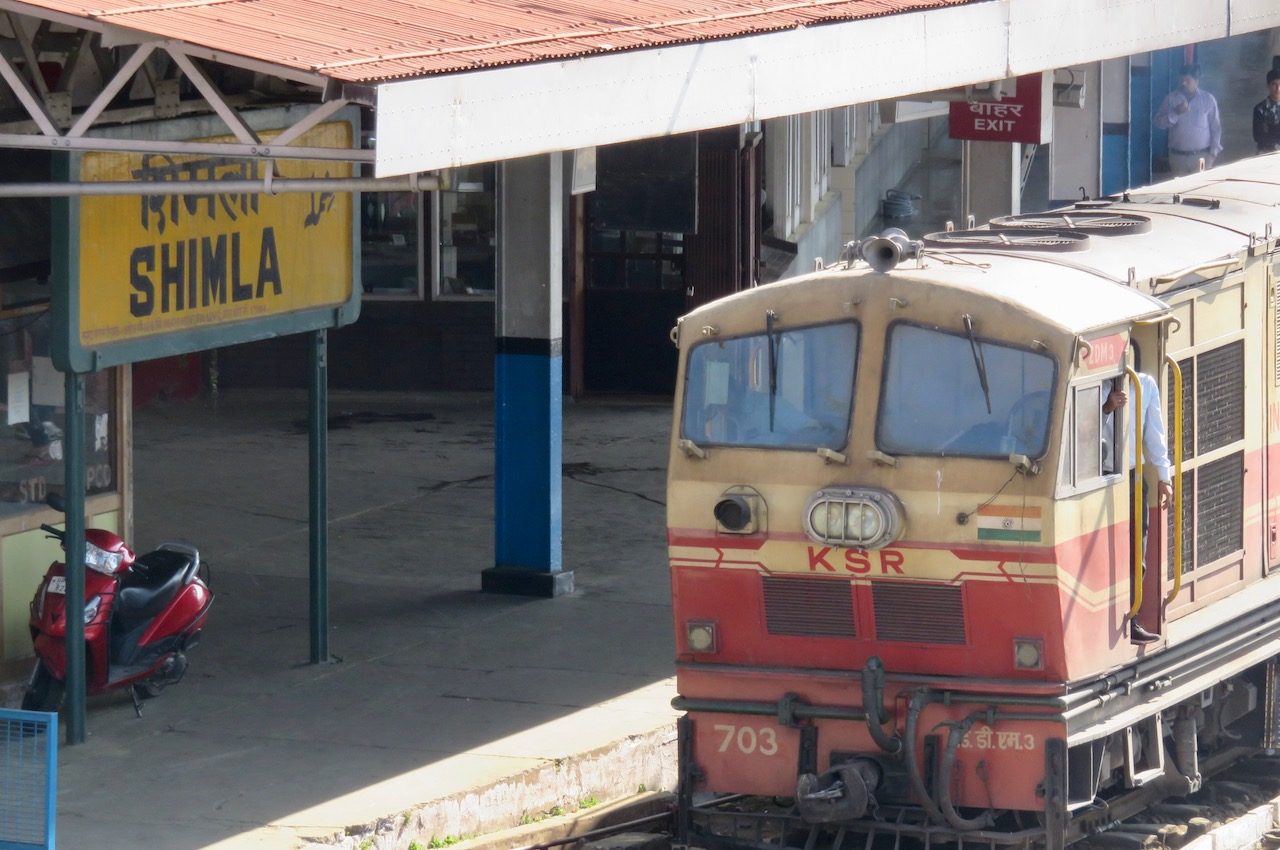
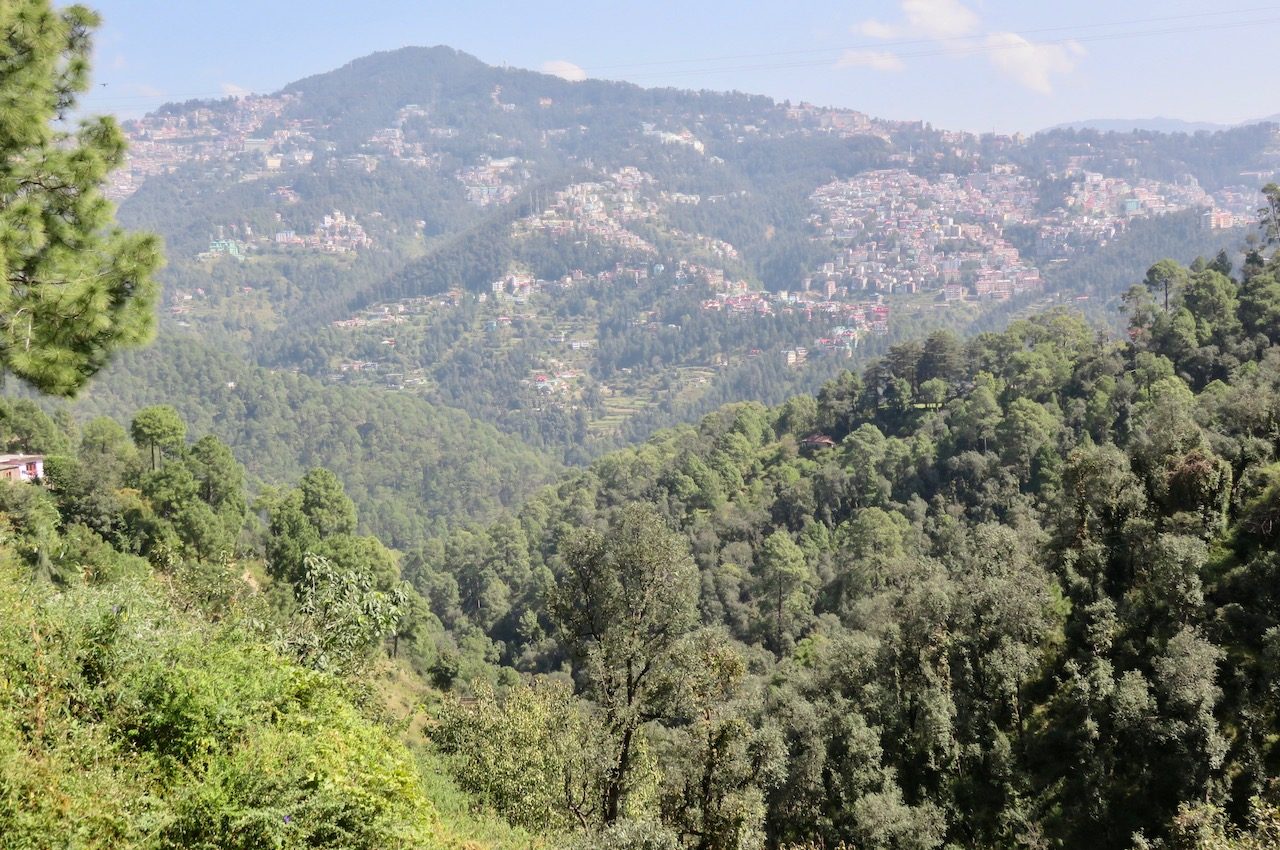
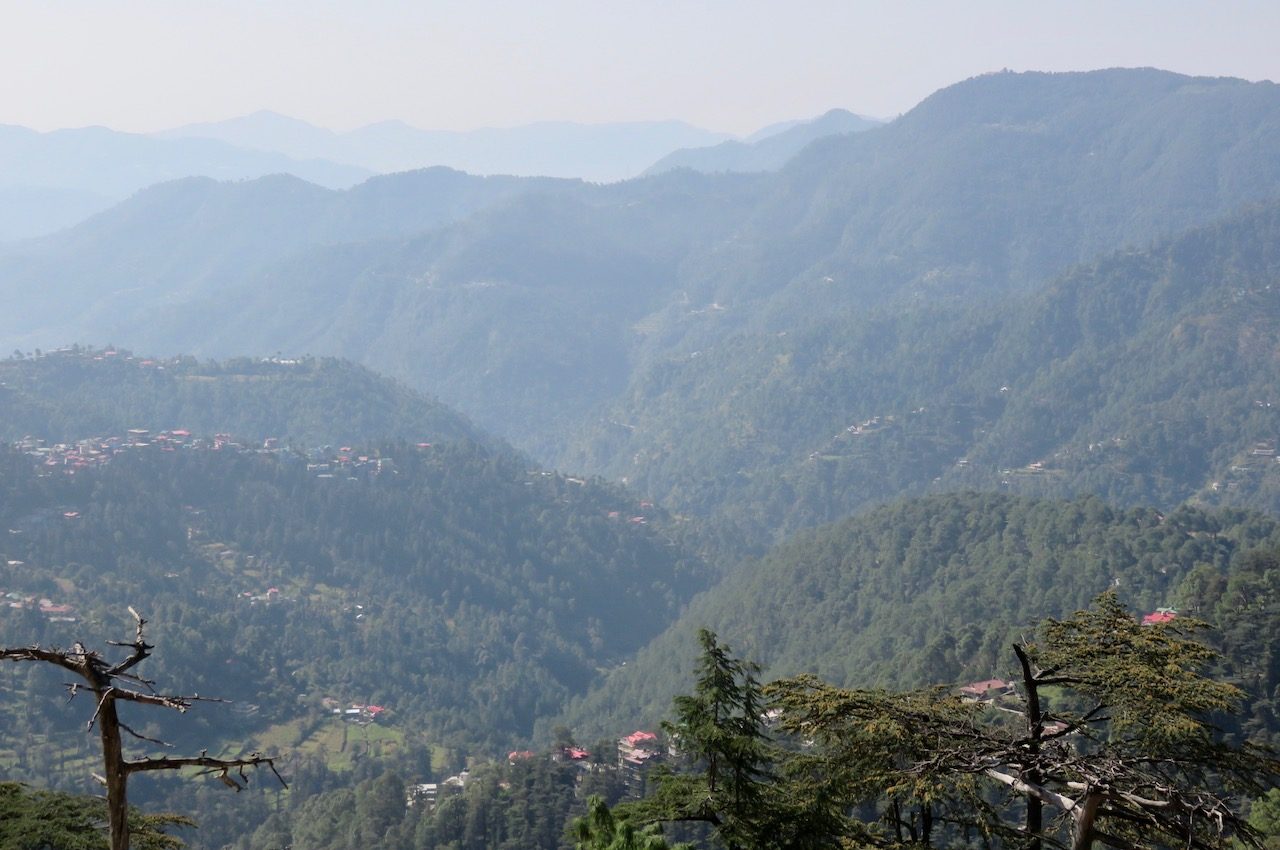
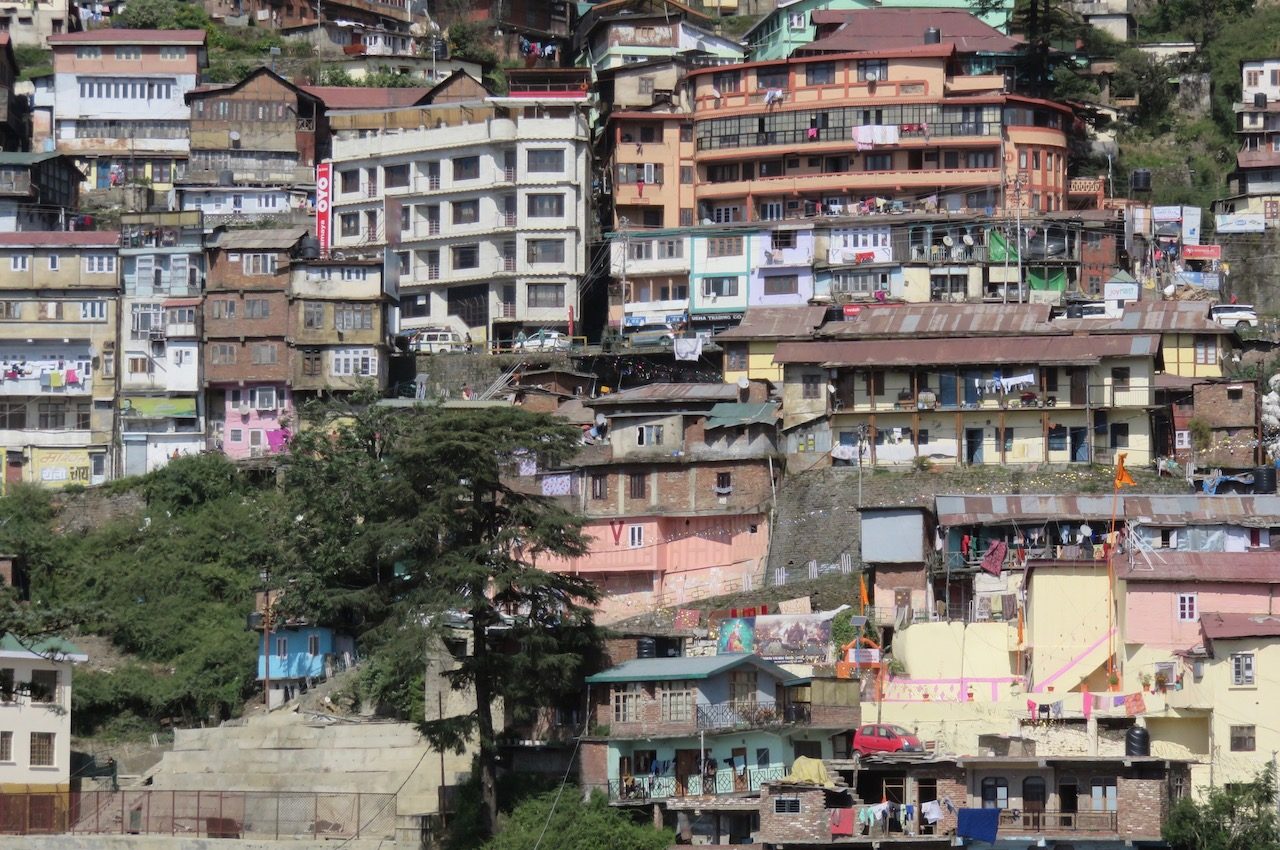
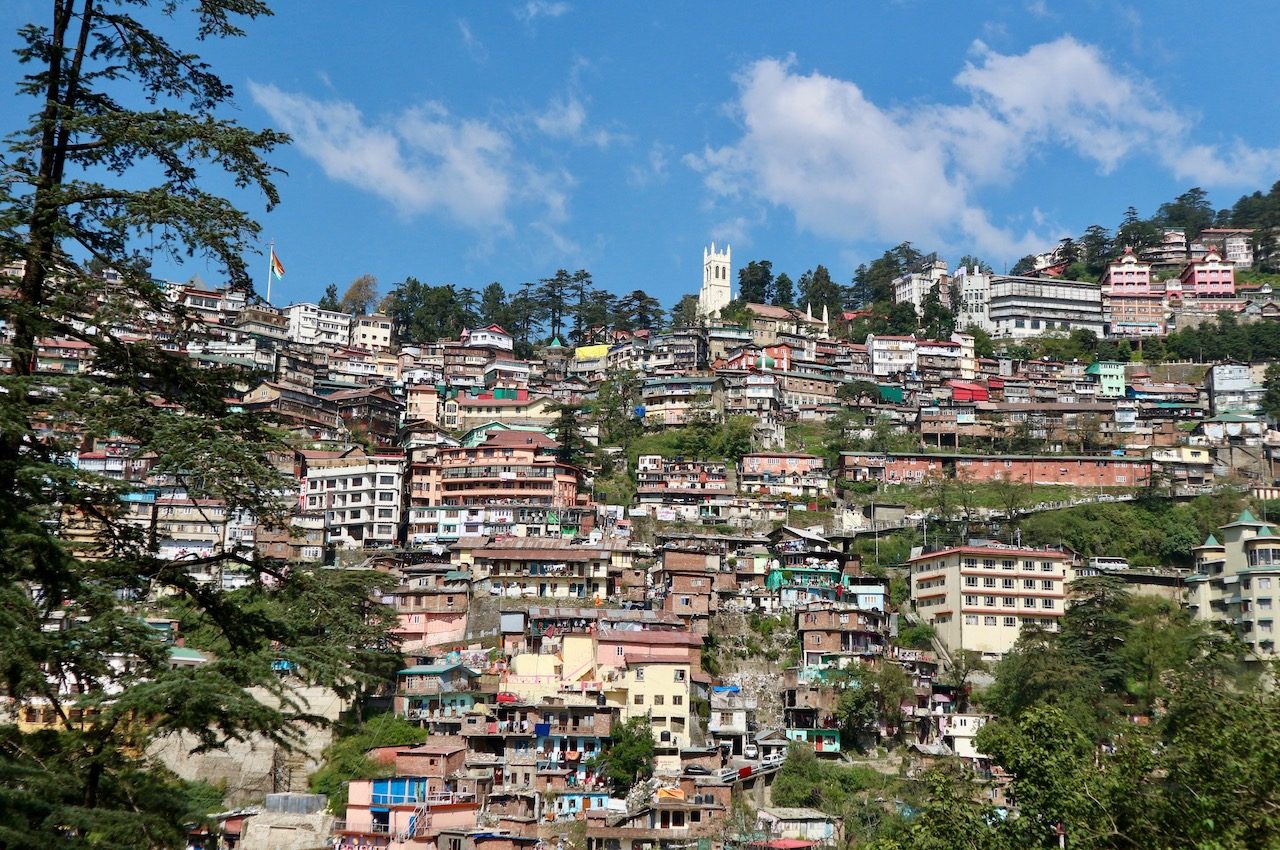
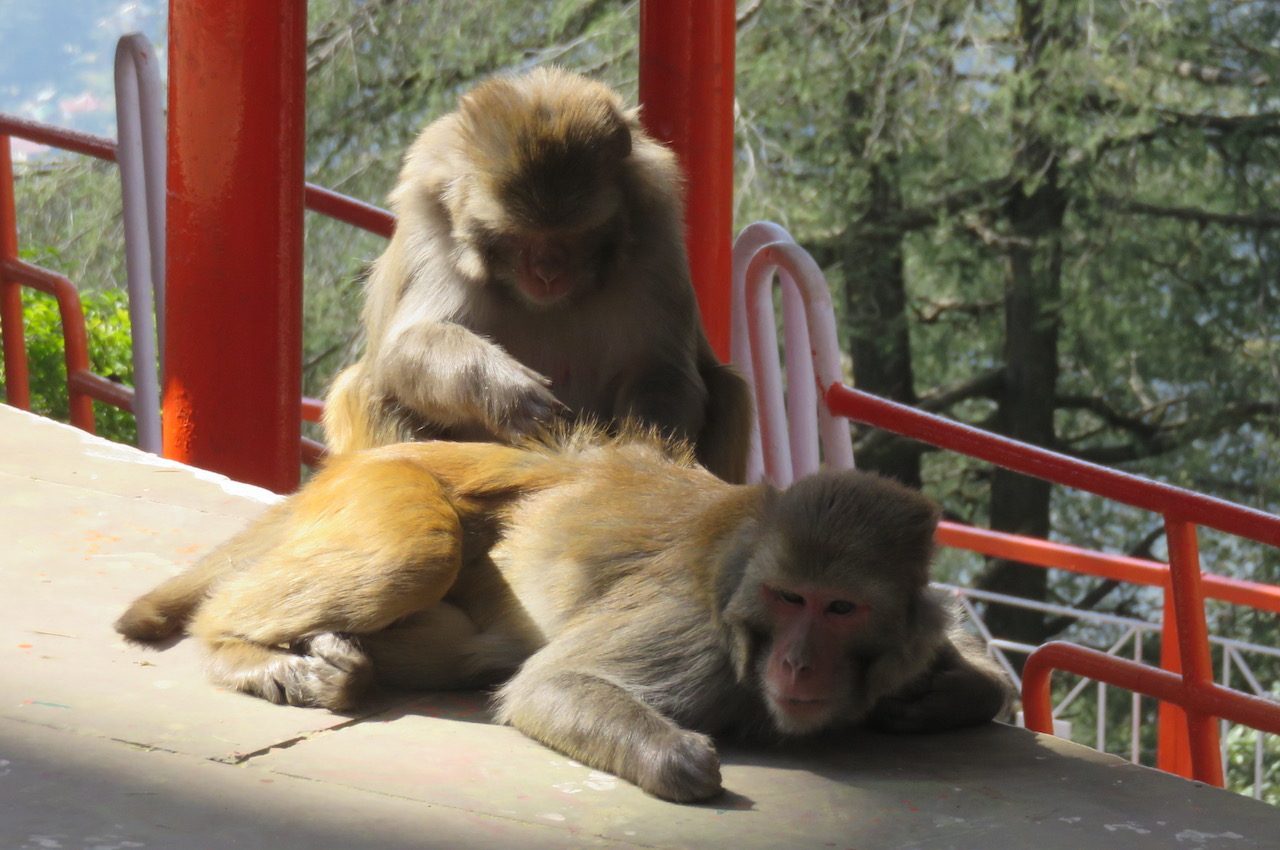
MORE INFO
 SHIMLA TOURISM PAGE, with plenty of information to help you plan a trip, including suggestions for things to do, festivals and more. READ MORE
SHIMLA TOURISM PAGE, with plenty of information to help you plan a trip, including suggestions for things to do, festivals and more. READ MORE
RELATED
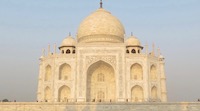 THE TEMPLE OF LOVE: It’s the symbol of India, it’s one of the world’s most famous buildings, and it comes with a heart-breaking love story. The Taj Mahal has it all… READ MORE
THE TEMPLE OF LOVE: It’s the symbol of India, it’s one of the world’s most famous buildings, and it comes with a heart-breaking love story. The Taj Mahal has it all… READ MORE
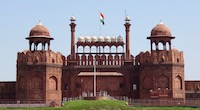 DELHI ATTRACTIONS: We kicked off our amazing trip to India with Delhi, on a Monday – the day the Red Fort is shut. So what else is there to do in the nation’s capital? READ MORE
DELHI ATTRACTIONS: We kicked off our amazing trip to India with Delhi, on a Monday – the day the Red Fort is shut. So what else is there to do in the nation’s capital? READ MORE
 COX & KINGS – WORTH IT? The travel company Cox & Kings has been taking people to India since 1758, so we travelled there with them too. It wasn’t cheap – but was it worth it? READ MORE
COX & KINGS – WORTH IT? The travel company Cox & Kings has been taking people to India since 1758, so we travelled there with them too. It wasn’t cheap – but was it worth it? READ MORE
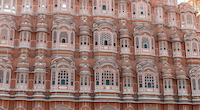 INDIA’S PINK CITY: Jaipur, the Pink City in Rajasthan, is one of the most evocative names in India and a highlight of anyone’s trip – and it’s just become a Unesco World Heritage Site… READ MORE
INDIA’S PINK CITY: Jaipur, the Pink City in Rajasthan, is one of the most evocative names in India and a highlight of anyone’s trip – and it’s just become a Unesco World Heritage Site… READ MORE
RECOMMENDED
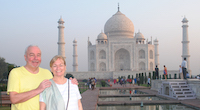 WELCOME TO OUR WORLD! Afaranwide’s home page – this is where you can find out about our latest posts and other highlights. READ MORE
WELCOME TO OUR WORLD! Afaranwide’s home page – this is where you can find out about our latest posts and other highlights. READ MORE
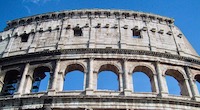 TOP 10 ATTRACTIONS: Many of the world’s most popular tourists sites are closed because of the coronavirus crisis, but you can still visit them virtually while you’re self-isolating. READ MORE
TOP 10 ATTRACTIONS: Many of the world’s most popular tourists sites are closed because of the coronavirus crisis, but you can still visit them virtually while you’re self-isolating. READ MORE
 TEN THINGS WE LEARNED: Our up-to-the-minute guide to creating a website, one step at a time. The costs, the mistakes – it’s what we wish we’d known when we started blogging. READ MORE
TEN THINGS WE LEARNED: Our up-to-the-minute guide to creating a website, one step at a time. The costs, the mistakes – it’s what we wish we’d known when we started blogging. READ MORE
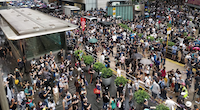 TROUBLED TIMES FOR EXPATS: Moving abroad can seem an idyllic prospect, but what happens when sudden upheavals or the inescapable realities of life intrude? READ MORE
TROUBLED TIMES FOR EXPATS: Moving abroad can seem an idyllic prospect, but what happens when sudden upheavals or the inescapable realities of life intrude? READ MORE
india
Shimla: Queen
of Hill Stations

COLIN SIMPSON
Shimla
IMAGINE if every spring, a government moved its entire administration, with all its departments, officials and support staff, from the capital to a difficult-to-reach mountain town 1,800 kilometres away.
To get the distance into perspective, France extends 962 kilometres from east to west, while Texas is 1,387 kilometres wide. And then imagine that each autumn, everyone moved back to the capital.
All this was happening just a few years after railways were introduced, long before the widespread use of the internal combustion engine and nearly 40 years before the first manned flight.
It’s what used to take place in India in the colonial era after Shimla, a city in the foothills of the Himalayas, was declared the summer capital in 1864. The decision was made so that the government officials of British India could escape the searing summertime heat in the capital Calcutta, now known as Kolkata. The territory these migratory administrators controlled included modern-day India, Pakistan, Bangladesh and Myanmar.

I found all this both intriguing and rather crazy when I read about it, and was keen to visit the “queen of hills”. It’s a spectacular and scenic place, much larger than I had imagined – population 170,000 – with closely packed houses and other buildings that spill down the hillsides.
When the British took control of the area where Shimla – named after a Hindu goddess – now stands, it was covered with thick forests and had a few scattered hamlets. Trees were quickly cleared to turn it into a hill station and make room for reminders of home such as Christ Church and the Gaiety Theatre.
Oddly, the church has a sign asking visitors to remove their shoes, something that’s more usually associated with Muslim rather than Christian worship. The stained glass windows are the work of Lockwood Kipling, father of Rudyard.
The church and theatre stand in an area called the Ridge that adjoins the Mall, the city’s main shopping street. This largely pedestrianised thoroughfare is the place to go if you want to eat, drink, pick up a few souvenirs or simply enjoy a pleasant stroll.
Another reminder of the colonial era is the Viceregal Lodge, the residence of the Viceroy of India under British rule. It’s a large, imposing pile built in a style that John Betjeman dubbed “Jacobethan” – a mix of Elizabethan and Jacobean architecture. It looked to me as if it would be more at home on some grand English country estate than next to the Himalayas, though there are good views of the mountains from the gardens.

Inside the lodge – also known as Rashtrapati Niwas – history hangs heavily in the air. It was the venue for the Shimla Conference in 1945, a failed attempt to settle the future of India, and the 1947 partition discussions. The table where the plans for partition – which were to have such tragic consequences – are believed to have been drawn up can still be seen at the lodge. Mahatma Gandhi visited the residence a number of times for talks with the viceroy of the day.
After independence, the lodge was used for a time as a summer retreat by successive Indian presidents before being handed over to the Indian Institute of Advanced Study.
Shimla has witnessed other moments of history. In 1972, for example, Indian Prime Minister Indira Gandhi and Pakistan’s President Zulfikar Ali Bhutto signed a peace treaty there.

Today the city is a popular tourist destination and continues to give respite from the heat of the plains. We visited India in October when the weather normally turns cooler, but temperatures were unseasonably high in Delhi and other low-lying cities, so it was a relief to get there. It’s popular with hikers and anyone who appreciates breathing cool, fresh mountain air. Shimla was declared a smoke-free city in 2010 – smoking is prohibited in public places, there are restrictions on the sale of cigarettes, and tobacco adverts are banned.
Monkeys can be a bit of a nuisance. There are lots of them at the Jakhoo Temple, which is dedicated to the Hindu monkey god Hanuman. A 33-metre high bright red statue of the deity towers above the temple, which stands on the slopes of Shimla’s highest peak, 2,455 metres above sea level.
Visitors are given sticks to keep the monkeys at bay by striking the ground to make a noise. (The sticks are NOT used to hit the animals – no monkeys were harmed in the making of this blog post.) If the monkeys get too close they often snatch sunglasses and other items, and expect to be given food in exchange for returning the belongings.
We spent three relaxing nights in Shimla – but the benefits were quickly forgotten when we returned to the exciting, exhilarating but exhausting sprawl of Delhi. It’s true what they say about India being a land of contrasts – no two cities could be more different.
Top tip: Travel to the city by car, not the Kalka-Shimla Railway. The so-called toy train is slow, busy and uncomfortable and has limited space for luggage. We took a short ride on it, and a huge mound of suitcases piled up by the door fell across the carriage as soon as the train started moving. We travelled by standard train from Delhi to Kalka, where a driver picked us up and took us on a spectacular journey up to Shimla.
August 2019









MORE INFO
 SHIMLA TOURISM PAGE, with plenty of information to help you plan a trip, including suggestions for things to do, festivals and more. READ MORE
SHIMLA TOURISM PAGE, with plenty of information to help you plan a trip, including suggestions for things to do, festivals and more. READ MORE
RELATED
 THE TEMPLE OF LOVE: It’s the symbol of India, it’s one of the world’s most famous buildings, and it comes with a heart-breaking love story. The Taj Mahal has it all… READ MORE
THE TEMPLE OF LOVE: It’s the symbol of India, it’s one of the world’s most famous buildings, and it comes with a heart-breaking love story. The Taj Mahal has it all… READ MORE
 DELHI ATTRACTIONS: We kicked off our amazing trip to India with Delhi, on a Monday – the day the Red Fort is shut. So what else is there to do in the nation’s capital? READ MORE
DELHI ATTRACTIONS: We kicked off our amazing trip to India with Delhi, on a Monday – the day the Red Fort is shut. So what else is there to do in the nation’s capital? READ MORE
 COX & KINGS – WORTH IT? The travel company Cox & Kings has been taking people to India since 1758, so we travelled there with them too. It wasn’t cheap – but was it worth it? READ MORE
COX & KINGS – WORTH IT? The travel company Cox & Kings has been taking people to India since 1758, so we travelled there with them too. It wasn’t cheap – but was it worth it? READ MORE
 INDIA’S PINK CITY: Jaipur, the Pink City in Rajasthan, is one of the most evocative names in India and a highlight of anyone’s trip – and it’s just become a Unesco World Heritage Site… READ MORE
INDIA’S PINK CITY: Jaipur, the Pink City in Rajasthan, is one of the most evocative names in India and a highlight of anyone’s trip – and it’s just become a Unesco World Heritage Site… READ MORE
RECOMMENDED
 WELCOME TO OUR WORLD! Afaranwide’s home page – this is where you can find out about our latest posts and other highlights. READ MORE
WELCOME TO OUR WORLD! Afaranwide’s home page – this is where you can find out about our latest posts and other highlights. READ MORE
 TOP 10 ATTRACTIONS: Many of the world’s most popular tourists sites are closed because of the coronavirus crisis, but you can still visit them virtually while you’re self-isolating. READ MORE
TOP 10 ATTRACTIONS: Many of the world’s most popular tourists sites are closed because of the coronavirus crisis, but you can still visit them virtually while you’re self-isolating. READ MORE
 TEN THINGS WE LEARNED: Our up-to-the-minute guide to creating a website, one step at a time. The costs, the mistakes – it’s what we wish we’d known when we started blogging. READ MORE
TEN THINGS WE LEARNED: Our up-to-the-minute guide to creating a website, one step at a time. The costs, the mistakes – it’s what we wish we’d known when we started blogging. READ MORE
 TROUBLED TIMES FOR EXPATS: Moving abroad can seem an idyllic prospect, but what happens when sudden upheavals or the inescapable realities of life intrude? READ MORE
TROUBLED TIMES FOR EXPATS: Moving abroad can seem an idyllic prospect, but what happens when sudden upheavals or the inescapable realities of life intrude? READ MORE
Shimla: Queen of the Hill Stations

COLIN SIMPSON
Shimla, India
IMAGINE if every spring, a government moved its entire administration, with all its departments, officials and support staff, from the capital to a difficult-to-reach mountain town 1,800 kilometres away.
To get the distance into perspective, France extends 962 kilometres from east to west, while Texas is 1,387 kilometres wide. And then imagine that each autumn, everyone moved back to the capital.
All this was happening just a few years after railways were introduced, long before the widespread use of the internal combustion engine and nearly 40 years before the first manned flight.
It’s what used to take place in India in the colonial era after Shimla, a city in the foothills of the Himalayas, was declared the summer capital in 1864. The decision was made so that the government officials of British India could escape the searing summertime heat in the capital Calcutta, now known as Kolkata. The territory these migratory administrators controlled included modern-day India, Pakistan, Bangladesh and Myanmar.

I found all this both intriguing and rather crazy when I read about it, and was keen to visit the “queen of hills”. It’s a spectacular and scenic place, much larger than I had imagined – population 170,000 – with closely packed houses and other buildings that spill down the hillsides.
When the British took control of the area where Shimla – named after a Hindu goddess – now stands, it was covered with thick forests and had a few scattered hamlets. Trees were quickly cleared to turn it into a hill station and make room for reminders of home such as Christ Church and the Gaiety Theatre.
Oddly, the church has a sign asking visitors to remove their shoes, something that’s more usually associated with Muslim rather than Christian worship. The stained glass windows are the work of Lockwood Kipling, father of Rudyard.
The church and theatre stand in an area called the Ridge that adjoins the Mall, the city’s main shopping street. This largely pedestrianised thoroughfare is the place to go if you want to eat, drink, pick up a few souvenirs or simply enjoy a pleasant stroll.
Another reminder of the colonial era is the Viceregal Lodge, the residence of the Viceroy of India under British rule. It’s a large, imposing pile built in a style that John Betjeman dubbed “Jacobethan” – a mix of Elizabethan and Jacobean architecture. It looked to me as if it would be more at home on some grand English country estate than next to the Himalayas, though there are good views of the mountains from the gardens.

Inside the lodge – also known as Rashtrapati Niwas – history hangs heavily in the air. It was the venue for the Shimla Conference in 1945, a failed attempt to settle the future of India, and the 1947 partition discussions. The table where the plans for partition – which were to have such tragic consequences – are believed to have been drawn up can still be seen at the lodge. Mahatma Gandhi visited the residence a number of times for talks with the viceroy of the day.
After independence, the lodge was used for a time as a summer retreat by successive Indian presidents before being handed over to the Indian Institute of Advanced Study.
Shimla has witnessed other moments of history. In 1972, for example, Indian Prime Minister Indira Gandhi and Pakistan’s President Zulfikar Ali Bhutto signed a peace treaty there.
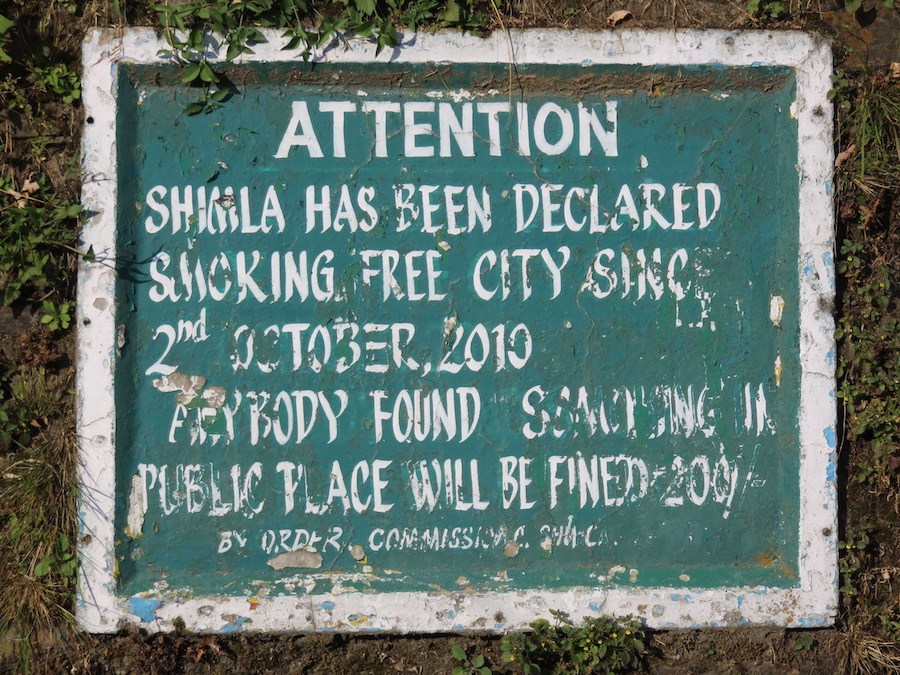
Today the city is a popular tourist destination and continues to give respite from the heat of the plains. We visited India in October when the weather normally turns cooler, but temperatures were unseasonably high in Delhi and other low-lying cities, so it was a relief to get there. It’s popular with hikers and anyone who appreciates breathing cool, fresh mountain air. Shimla was declared a smoke-free city in 2010 – smoking is prohibited in public places, there are restrictions on the sale of cigarettes, and tobacco adverts are banned.
Monkeys can be a bit of a nuisance. There are lots of them at the Jakhoo Temple, which is dedicated to the Hindu monkey god Hanuman. A 33-metre high bright red statue of the deity towers above the temple, which stands on the slopes of Shimla’s highest peak, 2,455 metres above sea level.
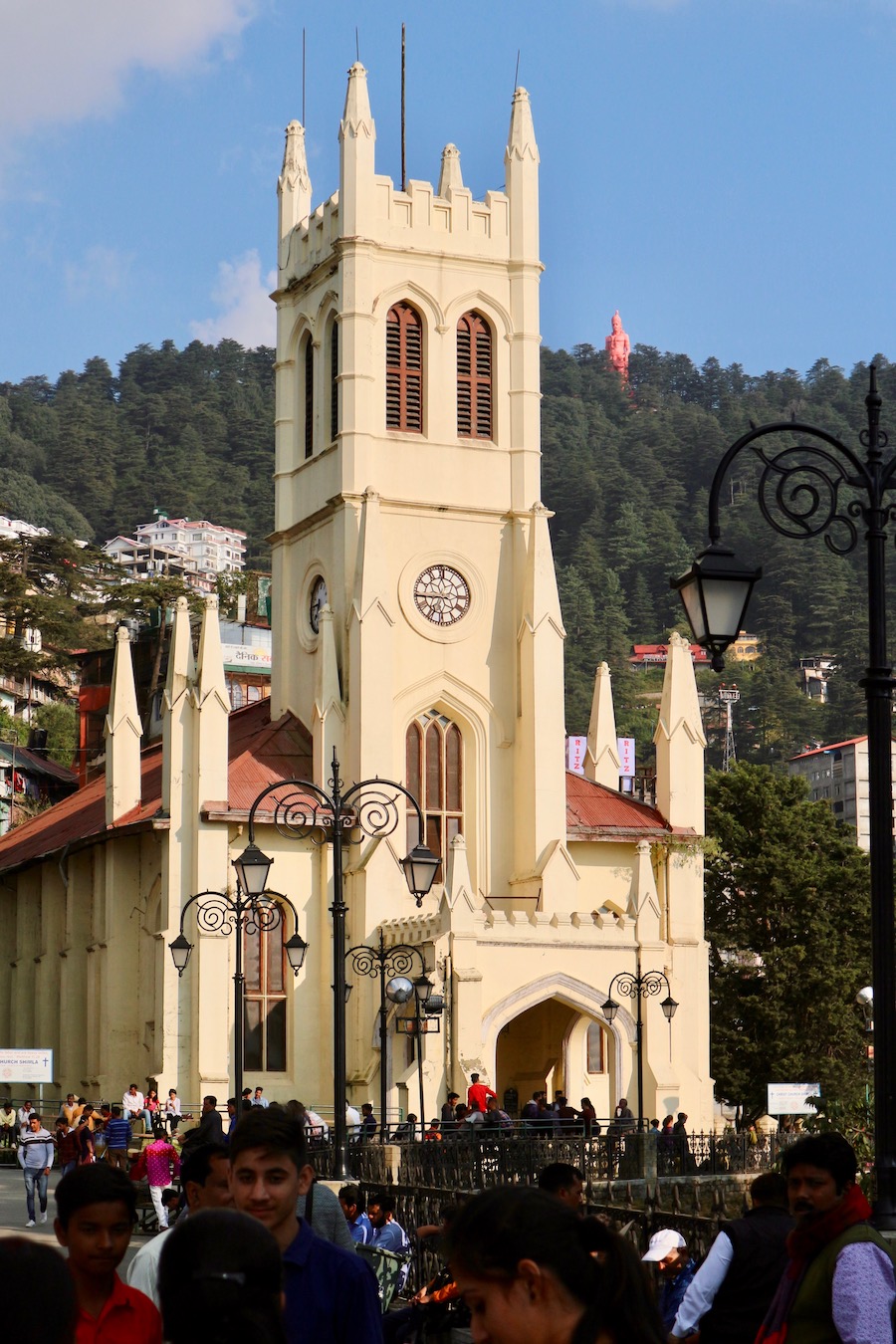
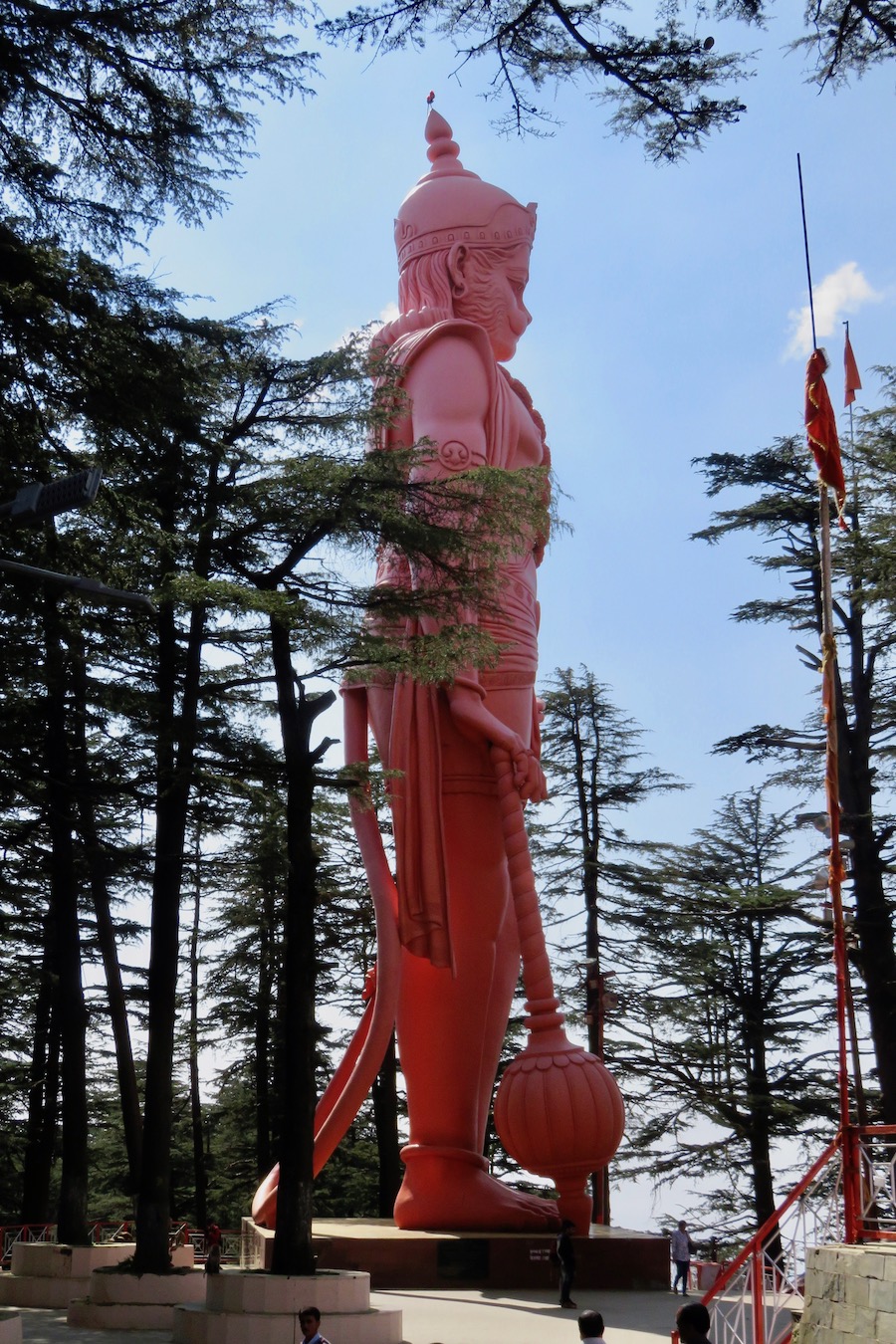
Visitors are given sticks to keep the monkeys at bay by striking the ground to make a noise. (The sticks are NOT used to hit the animals – no monkeys were harmed in the making of this blog post.) If the monkeys get too close they often snatch sunglasses and other items, and expect to be given food in exchange for returning the belongings.
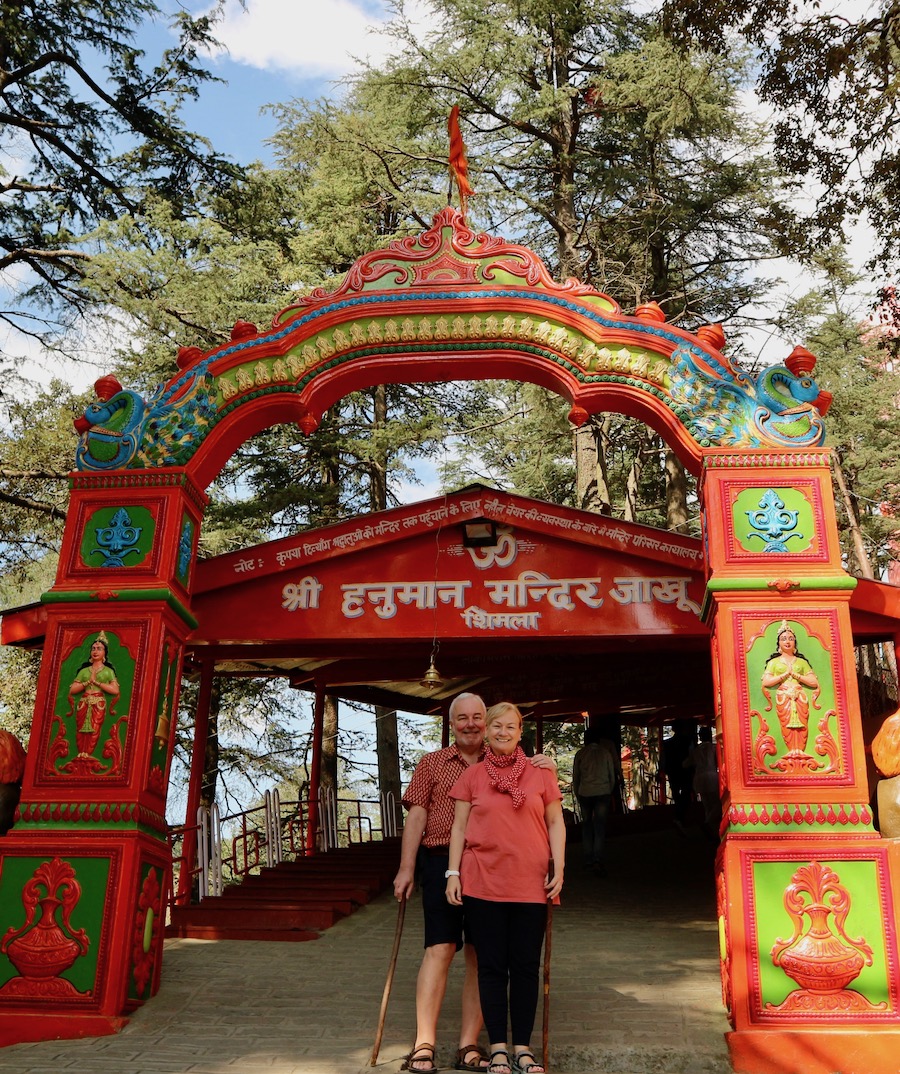
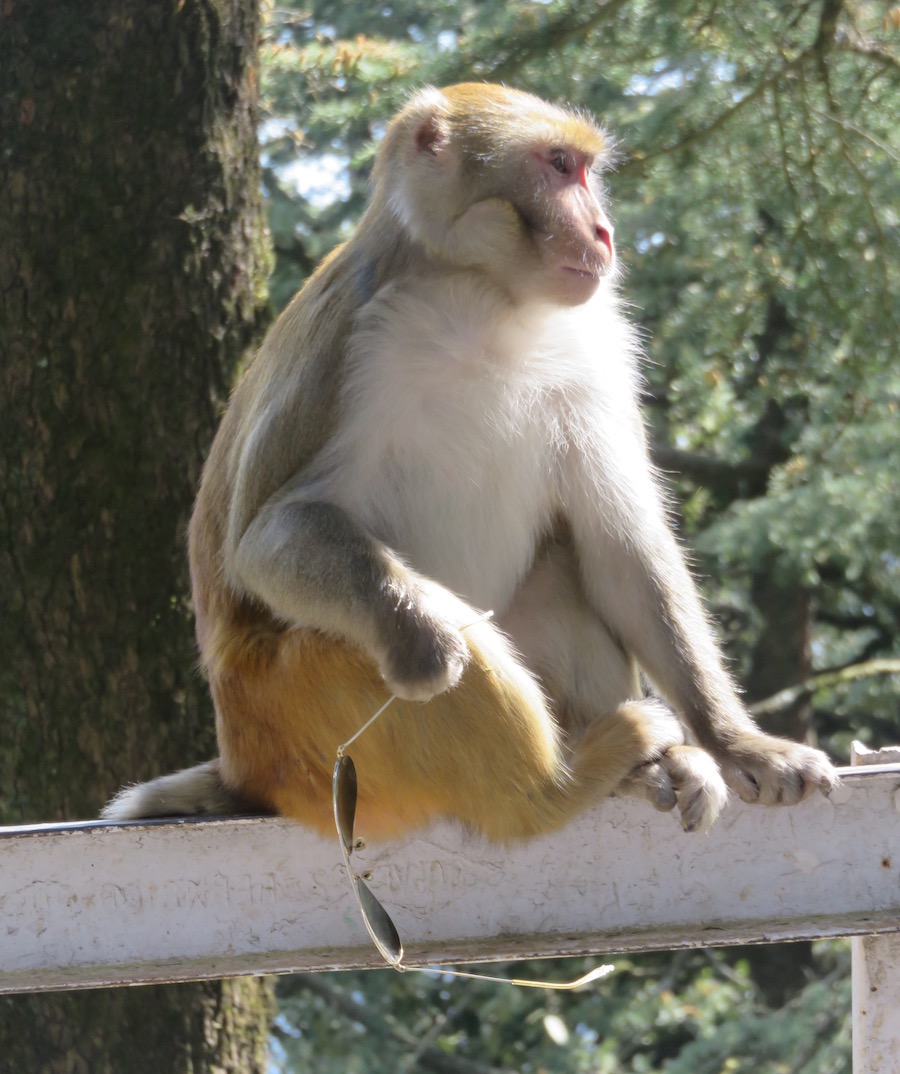
We spent three relaxing nights in Shimla – but the benefits were quickly forgotten when we returned to the exciting, exhilarating but exhausting sprawl of Delhi. It’s true what they say about India being a land of contrasts – no two cities could be more different.
Top tip: Travel to the city by car, not the Kalka-Shimla Railway. The so-called toy train is slow, busy and uncomfortable and has limited space for luggage. We took a short ride on it, and a huge mound of suitcases piled up by the door fell across the carriage as soon as the train started moving. We travelled by standard train from Delhi to Kalka, where a driver picked us up and took us on a spectacular journey up to Shimla.
August 2019
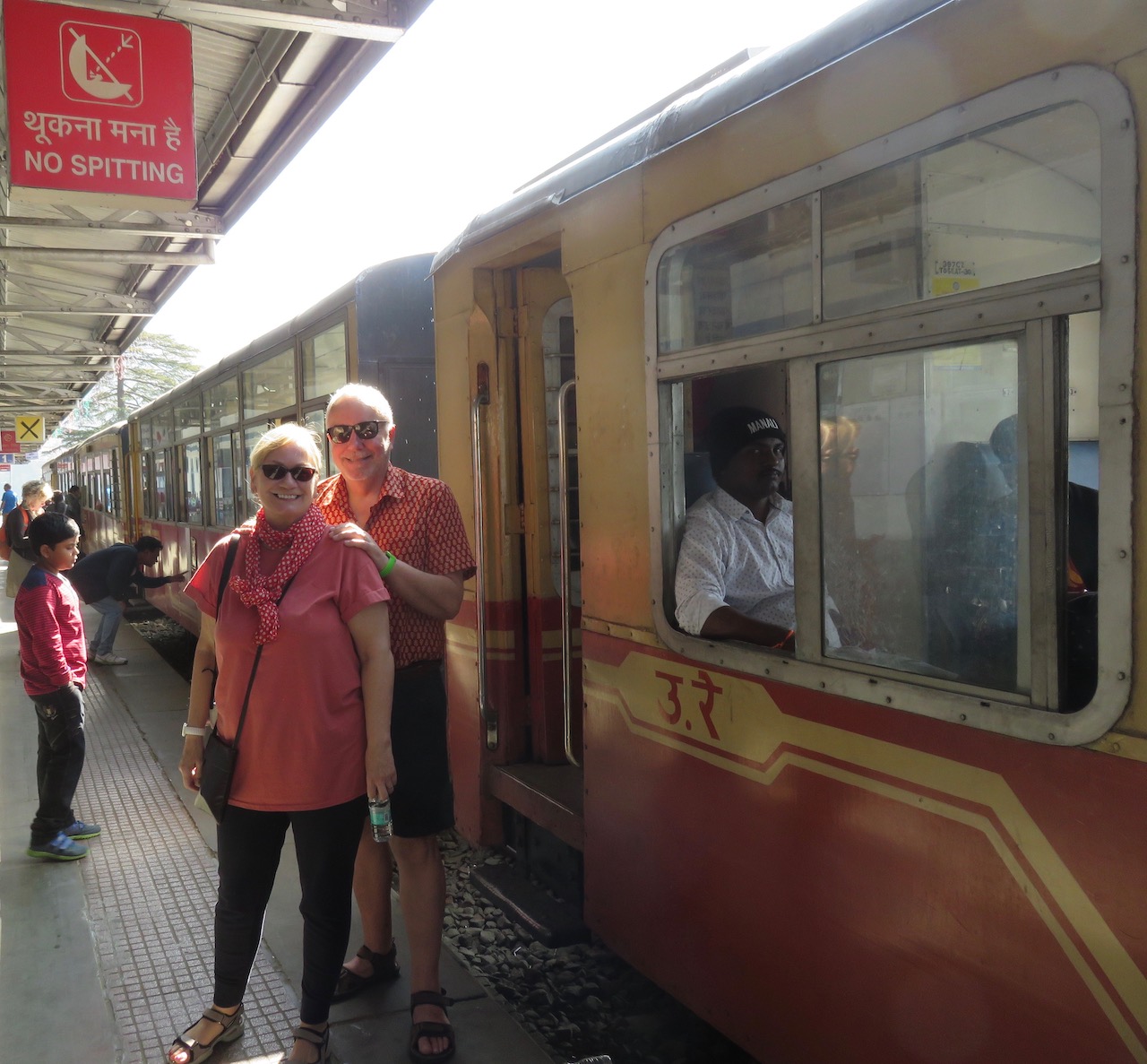
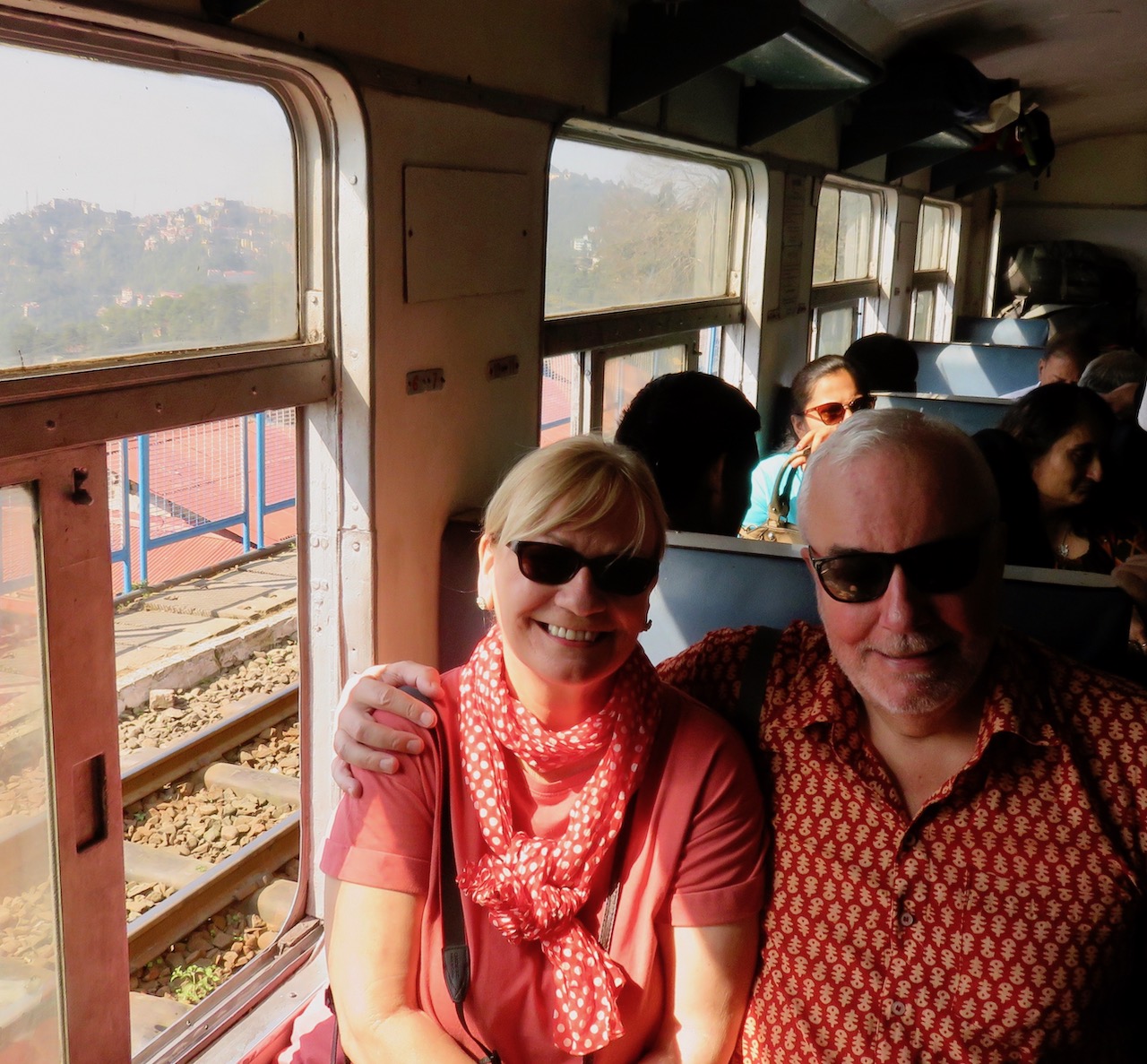









MORE INFO
 SHIMLA TOURISM PAGE, with plenty of information to help you plan a trip, including suggestions for things to do, festivals and more. READ MORE
SHIMLA TOURISM PAGE, with plenty of information to help you plan a trip, including suggestions for things to do, festivals and more. READ MORE
RELATED
 THE TEMPLE OF LOVE: It’s the symbol of India, it’s one of the world’s most famous buildings, and it comes with a heart-breaking love story. The Taj Mahal has it all… READ MORE
THE TEMPLE OF LOVE: It’s the symbol of India, it’s one of the world’s most famous buildings, and it comes with a heart-breaking love story. The Taj Mahal has it all… READ MORE
 DELHI ATTRACTIONS: We kicked off our amazing trip to India with Delhi, on a Monday – the day the Red Fort is shut. So what else is there to do in the nation’s capital? READ MORE
DELHI ATTRACTIONS: We kicked off our amazing trip to India with Delhi, on a Monday – the day the Red Fort is shut. So what else is there to do in the nation’s capital? READ MORE
 COX & KINGS – WORTH IT? The travel company Cox & Kings has been taking people to India since 1758, so we travelled there with them too. It wasn’t cheap – but was it worth it? READ MORE
COX & KINGS – WORTH IT? The travel company Cox & Kings has been taking people to India since 1758, so we travelled there with them too. It wasn’t cheap – but was it worth it? READ MORE
 INDIA’S PINK CITY: Jaipur, the Pink City in Rajasthan, is one of the most evocative names in India and a highlight of anyone’s trip – and it’s just become a Unesco World Heritage Site… READ MORE
INDIA’S PINK CITY: Jaipur, the Pink City in Rajasthan, is one of the most evocative names in India and a highlight of anyone’s trip – and it’s just become a Unesco World Heritage Site… READ MORE
RECOMMENDED
 WELCOME TO OUR WORLD! Afaranwide’s home page – this is where you can find out about our latest posts and other highlights. READ MORE
WELCOME TO OUR WORLD! Afaranwide’s home page – this is where you can find out about our latest posts and other highlights. READ MORE
 TOP 10 ATTRACTIONS: Many of the world’s most popular tourists sites are closed because of the coronavirus crisis, but you can still visit them virtually while you’re self-isolating. READ MORE
TOP 10 ATTRACTIONS: Many of the world’s most popular tourists sites are closed because of the coronavirus crisis, but you can still visit them virtually while you’re self-isolating. READ MORE
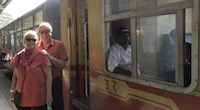 SHIMLA, QUEEN OF THE HILLS: Government officials once retreated to Shimla in the foothills of the Himalayas to escape India’s blazing hot summers. Now tourists make the same journey. READ MORE
SHIMLA, QUEEN OF THE HILLS: Government officials once retreated to Shimla in the foothills of the Himalayas to escape India’s blazing hot summers. Now tourists make the same journey. READ MORE
 TEN THINGS WE LEARNED: Our up-to-the-minute guide to creating a website, one step at a time. The costs, the mistakes – it’s what we wish we’d known when we started blogging. READ MORE
TEN THINGS WE LEARNED: Our up-to-the-minute guide to creating a website, one step at a time. The costs, the mistakes – it’s what we wish we’d known when we started blogging. READ MORE
 TROUBLED TIMES FOR EXPATS: Moving abroad can seem an idyllic prospect, but what happens when sudden upheavals or the inescapable realities of life intrude? READ MORE
TROUBLED TIMES FOR EXPATS: Moving abroad can seem an idyllic prospect, but what happens when sudden upheavals or the inescapable realities of life intrude? READ MORE
I’m just curious about the foundation of the houses in hills. Are they have experience a landslide before? just curious.
Hi, yes, tragically they do have a lot of landslides there, affecting both houses and roads. This one last weekend killed three people: https://timesofindia.indiatimes.com/city/shimla/landslide-kills-two-girls-in-shimla/articleshow/70722267.cms